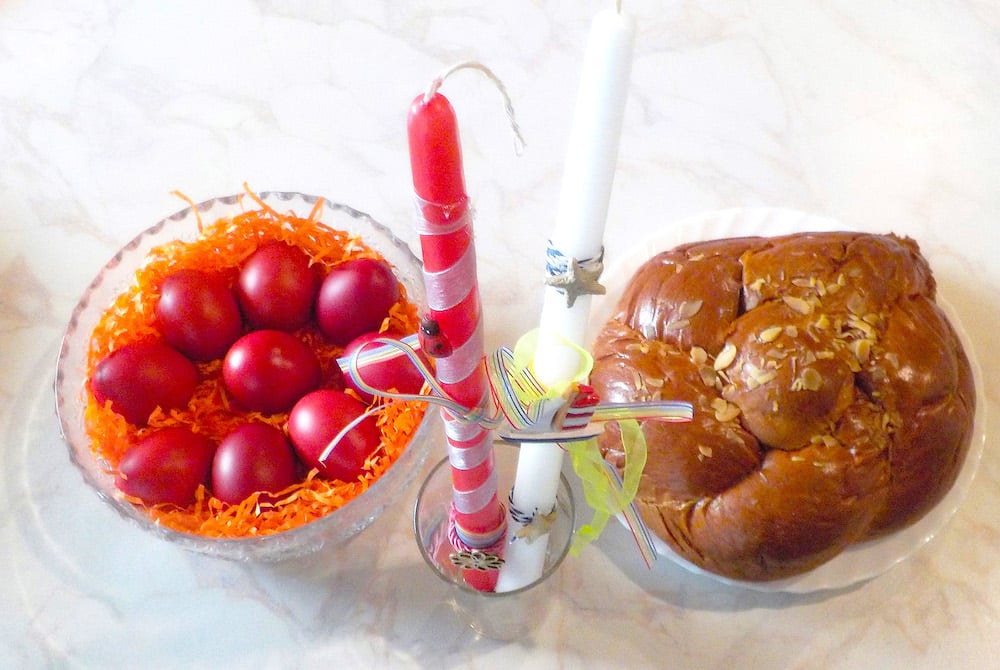
The Greek Orthodox Church is blessed with rich, colorful and symbolic Easter traditions, and Greeks have followed these customs for the important holiday faithfully for many centuries.
The most important tradition begins on Holy Friday with the Epitaphios (a wooden bier-like structure holding an icon of Jesus) and its procession in the streets around the church.
It is the saddest day of the entire year for Orthodox Christians because Christ is considered to be lying in his tomb after his crucifixion.
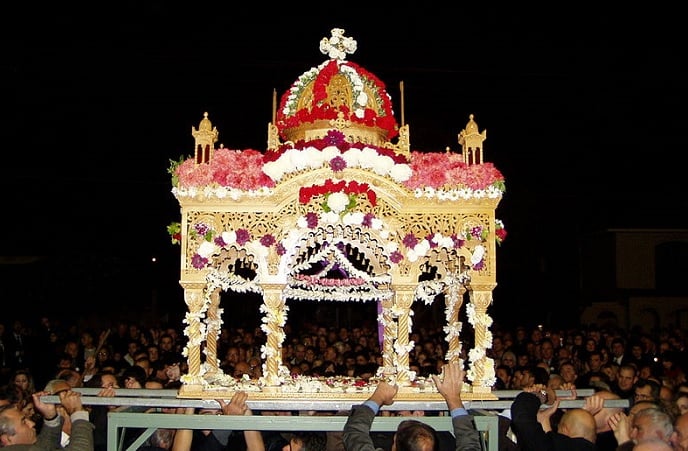
On the morning of Holy Friday, women and children go to church and decorate the Epitaph. The faithful place hundreds of flowers all around the wooden arch, venerate the icon underneath it, and kneel and go under it to receive God’s grace.
In the evening, the “Epitaphios” procession takes place in every parish across Greece. The Epitaph is taken out of the church and the procession begins, with parishioners following, solemnly holding lit beeswax candles, while church bells ring mournfully.
Greek Holy Saturday Traditions
On Holy Saturday, the tone is actually lighter, because Greeks are anticipating midnight, when Christ is resurrected.
When the faithful go to church for the Resurrection Liturgy, they hold white candles to receive the Holy Light. The white candle is a symbol of purity and hope.
Children hold the Paschal Candle (λαμπάδα – lambatha) which is given to them by their godfather or godmother. The lambatha is a long, decorated white candle which is a much-anticipated gift by children.
Throughout the years the Paschal Candles have become more and more elaborately decorated.
Children keep their lambatha throughout the year because the blessed candle which has been lit by the Holy Light on Resurrection night can be used in other special liturgies such as baptisms and weddings.
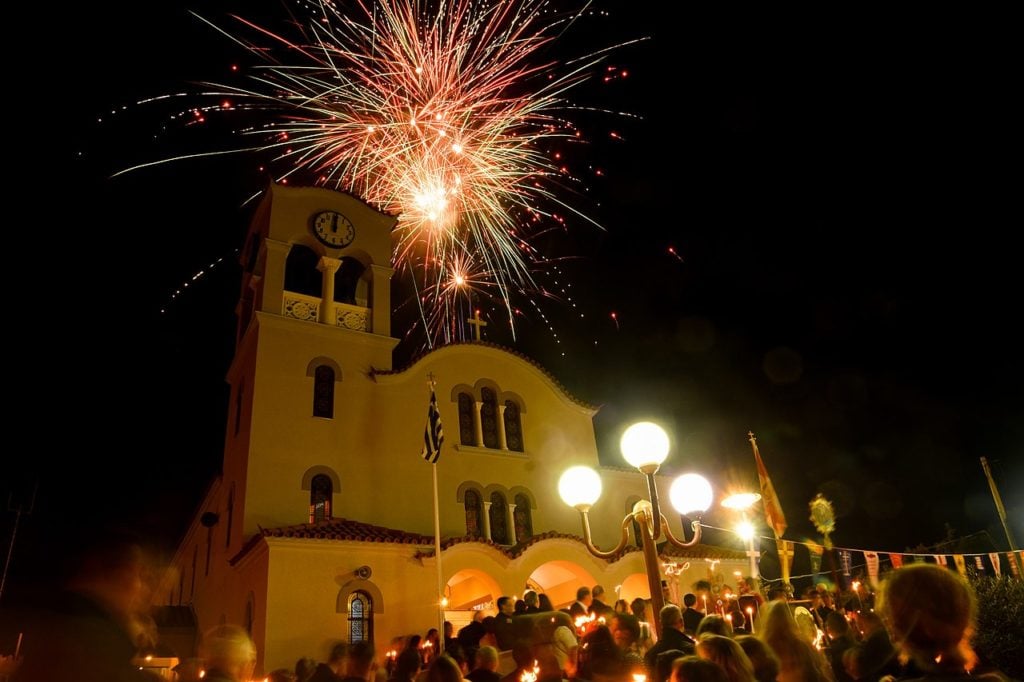
Another great tradition on Resurrection night in Greece is the firework displays. At the stroke of midnight, when the priest first declares “Christ is Risen!” the church bells ring joyfully while the sky is lit up with glittering, deafening fireworks.
This particular tradition is fairly recent and its origin is unknown. It is perhaps reminiscent of people who fire guns into the air to celebrate a great occasion.
Unfortunately, it is a dangerous Greek Easter tradition, as it always leaves behind victims with burns.
Traditional Food Served on Greek Easter
The rest of the traditions after Resurrection have to do with food and feasting. Naturally, after the 40-day Lenten fast before Easter, what most Greeks have in mind is to rush to the table to make up for lost time.
Most meat and other proteins, as well as alcohol and sugar, have been prohibited for a long time, and there is a great deal to make up for.
Right after the Resurrection liturgy, Greeks will go home to eat the first meat that they have had in forty days.

Magiritsa (μαγειρίτσα) is a soup made from lamb intestines, or offal, and tradition says it is the offal of the very lamb which is to be roasted on Sunday afternoon.
Magiritsa also contains dill, lettuce and other herbs and greens. Eaten after forty days of strict fasting, it is an ideal food with which to prepare the stomach for Easter Sunday, when large quantities of meat and celebratory foods will be consumed.
The Easter lamb: a Greek feast
Easter Sunday is the big day in Greece, the day of the Great Feast. The festive day begins with the many preparations for the roasting of a whole lamb on an outdoor spit.
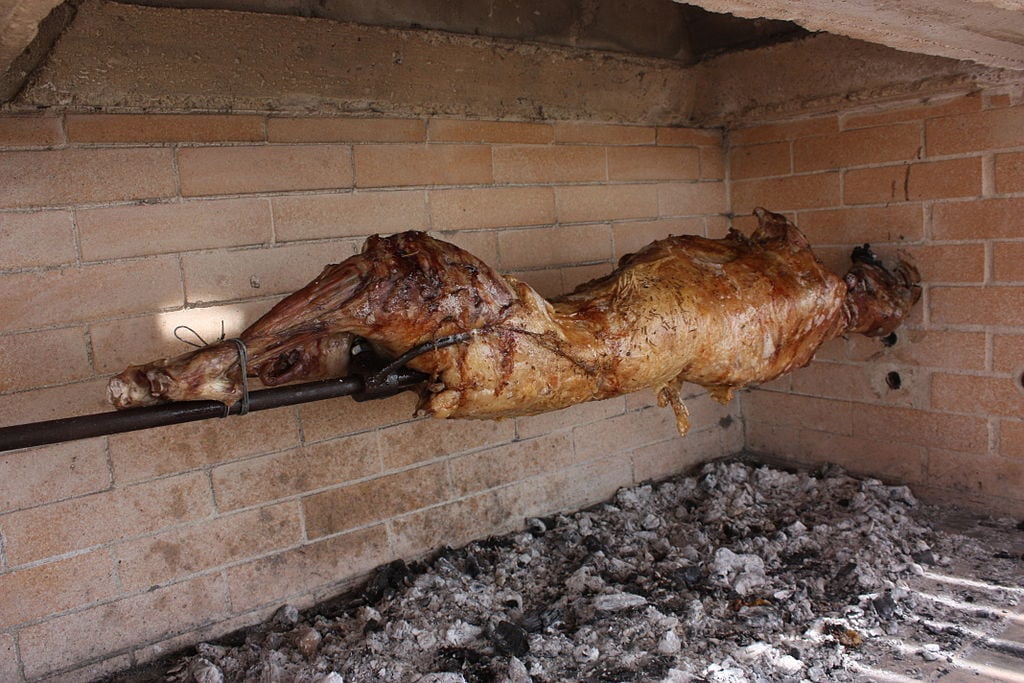
This particular meat is high in religious symbolism, which actually goes back to the Old Testament.
When God asked Abraham to sacrifice his son, Abraham obeyed God and began preparing for the sacrifice.
When Isaac saw what his father was doing, he asked, “The fire and wood are here, but where is the lamb for the burnt offering?”
Although Abraham naturally didn’t really want to kill his son, he was willing to do what God wanted him to do. When God saw that he was willing to obey, He told Abraham to stop, and Abraham sacrificed a nearby ram instead.
Today, Greeks spend Easter Sunday morning slow-roasting the delicious lamb, and then the whole family gathers at the table to eat.
The whole preparation and the turning of the spit is a communal experience which builds strong bonds between family and friends on this most holy day.
Tsoureki, sweet Easter bread
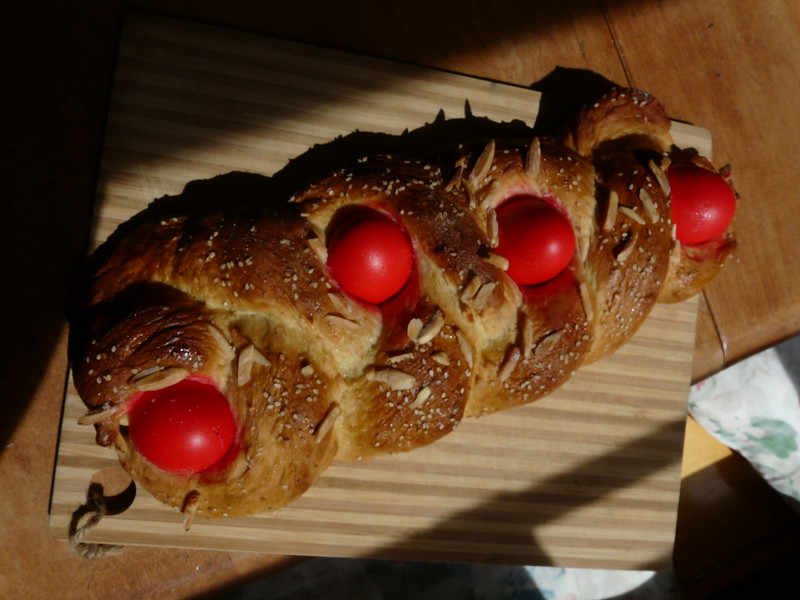
Finally, along with all the feasting, is the tsoureki. Called τσουρέκι in Greek, this is a sweetened yeast bread made with butter, milk, eggs and spices.
It is also prepared on Holy Thursday, but it is not to be eaten before the Resurrection, just like the red eggs. The tsoureki also usually features a brilliant red-dyed egg nestled into its braids.
Tradition has it that the tsoureki symbolizes the Resurrection of Christ, and rebirth in general, as after the dough is molded into shape, it rises and looks like it is alive as it swells and transforms into the finished loaf.
The tsoureki has different names and shapes in different parts of Greece, such as “kofinia,” “kalathakia,” “doksaria,” “avgoulas,” “koutsouna,” “kouzounakia” and others. The most common shape is the braid.
Greeks crack red eggs on the Holy Day
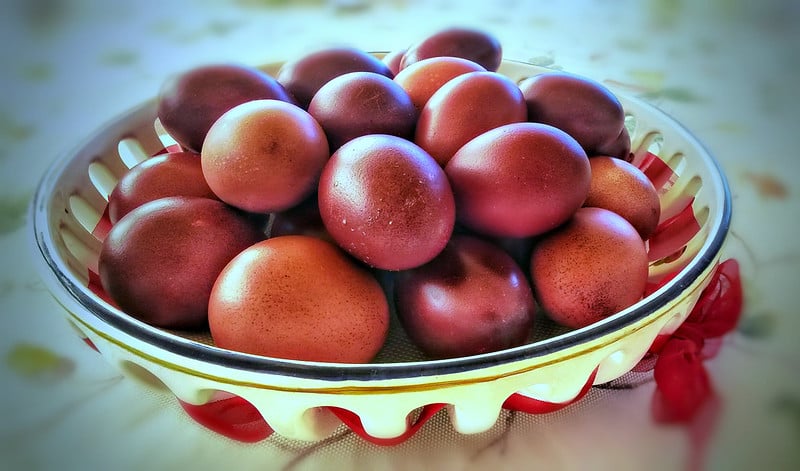
Once at the Easter table, Greeks will crack brilliant red-dyed eggs with their family and friends.
The eggs are dyed red on Holy Thursday, a custom which goes back to the early Christians and symbolizes the sacrificial blood of Christ.
Later Greek Orthodox traditions say that the eggs are dyed red on Holy Thursday in commemoration of the Last Supper.
The cracking of the red eggs has its own symbolism as well. The hard shell of the egg symbolizes the sealed tomb of Christ, while the cracking means that the tomb has been broken and that Christ has been resurrected from the dead.
See all the latest news from Greece and the world at Greekreporter.com. Contact our newsroom to report an update or send your story, photos and videos. Follow GR on Google News and subscribe here to our daily email!



